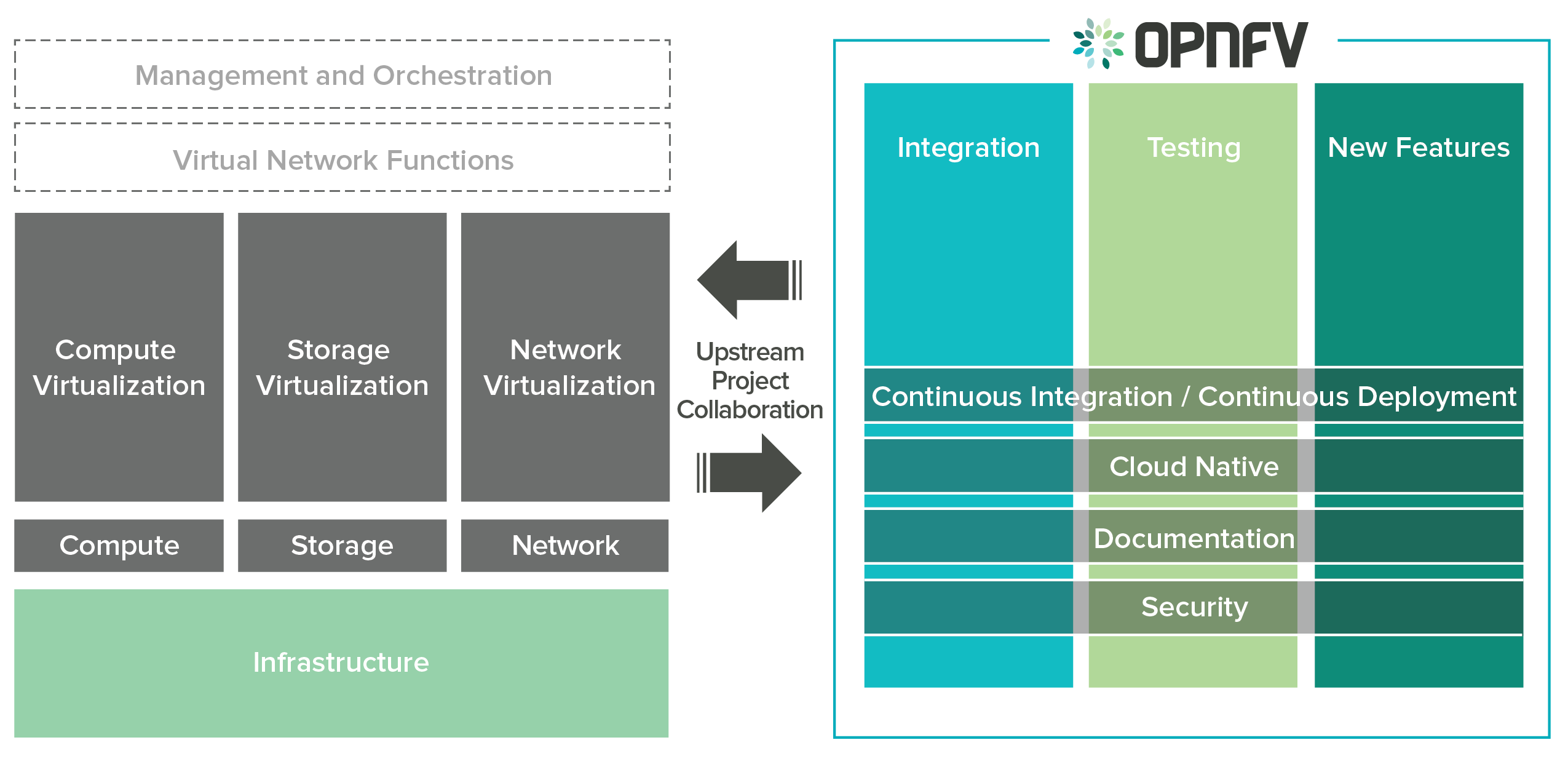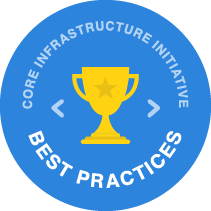Open Platform for NFV (OPNFV) is a project and community that facilitates a common NFVI, continuous integration (CI) with upstream projects, stand-alone testing tool sets, and a compliance and verification program for industry-wide testing and integration to accelerate the transformation of enterprise and service provider networks. Goals include accelerating time to market for NFV solutions, easing operational burdens, and ensuring the platform meets the industry’s needs.
OPNFV Platform Overview

As a common NFVI platform, OPNFV brings together upstream components across compute, storage and network virtualization in order to create an end-to-end platform. Activities within OPNFV focus on integration of components, end-to-end stack testing and automated build and deployment of the integrated environment. Continuous integration and automated testing of the platform for key NFV use cases is key to ensure that the platform meets NFV industry needs. Another key focus is creating compliance and verification programs to dramatically slash the operations team effort.
Jerma Release
OPNFV Jerma, the 10th and final stand-alone release of OPNFV, culminates over six years of development effort, integration, and testing — supporting the Cloud iNfrastructure Telco Taskforce (CNTT)’s evolution, and advancing testing and service assurance to further enable telco-grade infrastructure maintenance, upgrades, testing, benchmarking, and service assurance. The project is well positioned with CNTT to develop further capabilities according to the needs of network operators and telco ecosystems into the future. Learn more about Jerma.
Use Cases
Virtual network functions range from mobile deployments (5G/LTE), where mobile gateways (e.g. SGW, PGW, etc.) and related functions (e.g. MME, HLR, PCRF, etc.) are deployed as VNFs, to deployments with “virtual” customer premise equipment (CPE), tunneling gateways (e.g. VPN gateways), firewalls or application level gateways and filters (e.g. web and email traffic filters) to test and diagnostic equipment (e.g. SLA monitoring).
These VNF deployments need to be easy to operate, scale, and evolve – independently from the type of NFVI being deployed. OPNFV is a flexible platform, which can support a set of qualities and use-cases such as the following:
- The common mechanism for life-cycle management of VNFs, which include deployment, instantiation, configuration, start and stop, upgrade/downgrade and final decommissioning.
- The consistent mechanism for onboarding, specifying and interconnecting VNFs, VNFCs and PNFs; agnostic of the physical network infrastructure, network overlays, etc., i.e., virtual link.
- The common mechanism for dynamically instantiating new VNF instances or decommissioning sufficient VNF instances to meet the current performance, scale and network bandwidth needs.
- The mechanism for detecting faults and failure in the NFVI, VIM and other components of the infrastructure and recovering from those failures.
- The mechanism for sourcing/sinking traffic from/to a physical network function to/from a virtual network function.
- NFVI as a Service for hosting different VNF instances from different vendors on the same infrastructure
Pharos Community Labs
A key part of OPNFV is the Pharos Community Labs project as well as the OPNFV bare metal lab infrastructure hosted by the Linux Foundation. Pharos is a federated NFV test lab capability that is geographically and technically diverse. It enables the deployment and testing of OPNFV builds on a variety of different hardware environments and helps ensure that OPNFV is not tied to one particular hardware architecture or vendor. Pharos compliant labs are also used in the creation and testing of each OPNFV software releases. Pharos Lab-as-a-service (LaaS) also allows developers to reserve hardware resources for specific periods of time ahttps://labs.opnfv.orgs well as access to automatically pre-provisioned OPNFV stacks, thus speeding up software development. Learn more about Pharos.
Upstream Projects
OPNFV integrates components from upstream projects, such as OpenStack, Kubernetes, OpenDaylight, FD.io, and many others. OPNFV will continue working with these and other relevant upstream communities for future releases.
OPNFV has an “upstream first” philosophy. We do not look to fork upstream projects or create OPNFV specific versions of these projects. When, through our requirements projects or our testing activities, we discover gaps, desired features, or bugs; we will participate in the appropriate community process of the upstream organization to incorporate patches.
Standards Developing Organizations
The OPNFV project also works in collaboration with Standards Developing Organizations (SDO) such as ETSI NFV ISG, IETF, GSMA, MEF, TM Forum, and others. We believe that collaboration amongst organizations will enable the industry to move forward together and that both standards and open source are needed to meet shared goals for NFV. In fact, the Common NFVI effort is in direct collaboration with GSMA.
OPNFV Security
Core Infrastructure Initiative (CII) is a project managed by The Linux Foundation that enables technology companies, industry stakeholders and esteemed developers to collaboratively identify, fund and improve the security of critical open source projects. OPNFV has been awarded the Core Infrastructure Initiative Best Practices badge and is 100% compliant with CII best practices. See details on the OPNFV Badge here and the CII badge program here.

